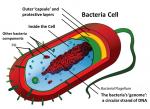|
This section contains 738 words (approx. 3 pages at 300 words per page) |

|
The stomach and gastrointestinal tract are not sterile and are colonized by microorganisms that perform functions beneficial to the host, including the manufacture of essential vitamins, and the prevention of colonization by undesirable microbes.
The benefits of the close relationship between the microorganisms and the host also extends to the microbes. Microorganisms are provided with a protected place to live and their environment--rich in nutrients--and is relatively free from predators.
This mutually beneficial association is always present. At human birth, the stomach and gastrointestinal tract are usually sterile. But, with the first intake of food, colonization by bacteria commences. For example, in breast-fed babies, most of the intestinal flora consists of bacteria known as bifidobacteria. As breast milk gives way to bottled milk, the intestinal flora changes to include enteric bacteria, bacteroides, enterococci, lactobacilli...
|
This section contains 738 words (approx. 3 pages at 300 words per page) |

|


